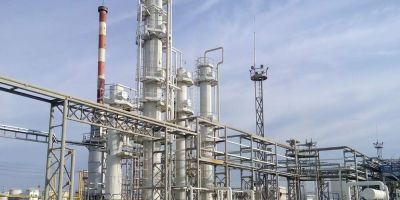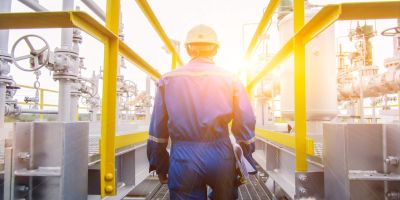Benzene Fenceline Monitoring
ANALYTICAL SOLUTIONS FOR BENZENE FENCELINE MONITORING
Innovative Instrumentation, Gas Analysis and Process Control Solutions for Benzene Fenceline Monitoring
In recent years, there has been increasing attention given to the monitoring of benzene levels near industrial facilities. This is primarily driven by concerns about the potential health hazards associated with exposure to benzene. Benzene is a highly toxic and cancer-causing compound that is released into the atmosphere during various industrial activities such as oil and gas production, chemical manufacturing, and transportation.
Fugitive emissions, which originate from industries, refineries, energy production, and natural gas pipelines, contribute significantly to pollution. To address this issue and provide better protection and information to nearby communities, the implementation of fenceline monitoring has become crucial. Under the regulation 40 CFR § 63.658, this monitoring framework aims to not only enhance emission controls for flares, pressure relief devices, storage tanks, and delayed coker operations but also minimize the release of hazardous air pollutants.
The primary objective of fenceline monitoring is to measure the ambient air concentration of specific chemicals at the property line of manufacturing sites. By requiring sampling along the facility property boundary, this monitoring approach ensures that nearby communities are kept informed about the levels of these chemicals in the surrounding environment. Ultimately, the implementation of fenceline monitoring aims to reduce the presence of hazardous air pollutants and enhance the overall safety of manufacturing sites.

SERVICE | SALES | TRAINING
Americas +1 713.947.9591
EMEA +49 69 20436910
China/APAC +86 400 086 0106
-

40 CFR § 63.658 fenceline monitoring
40 CFR § 63.658 refers to a specific section within the U.S. Environmental Protection Agency’s (EPA) regulations known as the National Emission Standards for Hazardous Air Pollutants (NESHAP) for the petroleum refining industry. The subsection “fenceline monitoring” addresses the requirements for monitoring emissions at the facility’s fenceline.
Under 40 CFR § 63.658, petroleum refineries are required to establish a fenceline monitoring system to measure and record concentrations of specific hazardous air pollutants (HAPs) at the facility’s property boundary or fenceline. The purpose of fenceline monitoring is to assess potential emissions and ensure compliance with the NESHAP standards to protect public health and the environment.
The key points covered in 40 CFR § 63.658 fenceline monitoring include:
- Monitoring System Design: The regulation specifies the design requirements for the fenceline monitoring system. This includes the placement of monitoring devices, such as monitors or analyzers, at specified locations along the fenceline to capture representative samples of the ambient air.
- Sampling Parameters: The regulation identifies the specific HAPs that must be monitored, such as benzene, toluene, ethylbenzene, and xylene (BTEX), as well as other regulated pollutants. It also outlines the required sampling frequency, duration, and methodologies to be used.
- Reporting and Recordkeeping: Facilities are required to maintain records of the monitoring data, including the measured concentrations of HAPs at the fenceline. This information must be retained for a specified period and made available to regulatory agencies upon request. Facilities may also be required to report the monitoring results to the EPA or relevant state regulatory authorities.
- Corrective Actions: If the monitored concentrations exceed specified action levels or trigger thresholds, the facility is obligated to take corrective actions. These actions may include investigating and addressing potential emission sources, implementing control measures, or reassessing the effectiveness of existing control technologies.
-

What happens if you don’t have proper fenceline monitoring?
Failure to monitor fenceline monitoring as required by regulations, such as 40 CFR § 63.658, can have several consequences, including legal and regulatory implications. Here are some potential outcomes of non-compliance:
- Regulatory Enforcement Actions: Regulatory agencies, such as the U.S. Environmental Protection Agency (EPA) or state environmental agencies, may take enforcement actions against the facility for failure to comply with fenceline monitoring requirements. This can include issuing notices of violation, fines, penalties, or taking legal action.
- Compliance Orders and Consent Decrees: In cases of non-compliance, regulatory agencies may issue compliance orders or negotiate consent decrees with the facility. These documents outline specific actions that the facility must take to come into compliance, including implementing proper fenceline monitoring protocols.
- Increased Scrutiny and Inspections: Failure to monitor fenceline emissions may result in increased scrutiny from regulatory agencies. Inspections, audits, or additional monitoring requirements may be imposed on the facility to ensure compliance with fenceline monitoring and other regulatory obligations.
- Public Perception and Community Relations: Non-compliance with fenceline monitoring requirements can lead to negative public perception and damage the facility’s reputation. This can result in strained community relations, increased public scrutiny, and potential legal action by affected communities or advocacy groups.
- Increased Environmental and Health Risks: Fenceline monitoring serves as an important tool for assessing and mitigating potential environmental and health risks associated with emissions from industrial facilities. Failure to monitor can hinder the identification and timely mitigation of harmful emissions, increasing the risks to nearby communities and the environment.
- Loss of Permits or Operating Certificates: Regulatory agencies may take more severe actions, such as suspending or revoking permits or operating certificates, in cases of repeated or significant non-compliance with fenceline monitoring requirements. This can disrupt facility operations and may require corrective actions to reinstate the necessary permits.
-

INDUSTRIAL PROCESS MASS SPECTROMETERS
Our EXTREL™ quadrupole industrial mass spectrometers offer rapid, constant updates of the required compliance parameters as well as further clarification for overall process controls and safety. Utilizing real-time mass spectrometer gas analyzers, this article provides several examples and data from flare gas, fenceline, fuel gas and air monitoring environmental applications. They can deliver timely benzene fenceline monitoring by using their advanced capabilities to detect and quantify benzene levels in real-time.
For benzene fenceline monitoring, our EXTREL quadrupole industrial mass spectrometers can be configured to continuously sample air from around the perimeter of an industrial facility or storage tank, where benzene may be present.
By providing timely monitoring of benzene levels, the mass spec can help industrial facilities to detect and respond to benzene emissions quickly, minimizing the potential impact on nearby communities and the environment. Additionally, it can help facilities comply with regulatory requirements for benzene monitoring and reporting.
- Real-time analysis of BTEX, acrylonitrile, VCM, EDC, HCl, VOCs, HAPs, solvents, H2O, O2, and LELs in air
- Low-level leak detection of hazardous compounds and EPA method 320 HAPS
- Emissions from industrial or agricultural operations and urban environments
- Refinery benzene fenceline monitoring for Refinery Sector Rule (RSR) compliance
-

FTIR (FOURIER TRANSFORM INFRARED) & FT-NIR (NEAR-INFRARED) PROCESS & LAB ANALYZERS
Our ANALECT® Series of FTIR (Fourier Transform Infrared) and FT-NIR (Near-Infrared) Process and Lab Analyzers are advanced analytical instruments that can be used for monitoring fenceline emissions.
FTIR analyzers can detect and measure various types of gas-phase compounds, including volatile organic compounds (VOCs), hazardous air pollutants (HAPs), and greenhouse gases (GHGs). The analyzer works by passing a beam of infrared light through a gas sample and measuring the absorption of the light by the sample. By analyzing the absorption spectrum, the analyzer can identify and quantify the individual compounds in the sample.
FT-NIR analyzers, on the other hand, are typically used to measure the composition of liquids and solids. They work by analyzing the absorption of near-infrared light by the sample, which provides information about the chemical composition of the sample.
To monitor fenceline emissions, our ANALECT Series of analyzers can be installed at the fenceline of a facility, where they can continuously monitor the air quality in real-time. The analyzers can be programmed to detect specific compounds and alert facility personnel if concentrations exceed predetermined levels. This allows the facility to take corrective action quickly, reducing the risk of exposure to harmful compounds and ensuring compliance with environmental regulations.
Our ANALECT® EVM™ (Environmental Vapor Monitor) System can detect fenceline fugitive emissions. The system is designed to detect and quantify volatile organic compounds (VOCs) and hazardous air pollutants (HAPs) in ambient air, making it ideal for monitoring fenceline emissions from industrial facilities. The EVM™ system can be configured to detect specific compounds or groups of compounds, depending on the needs of the facility. It can also be programmed to provide real-time alerts when concentrations exceed predetermined levels, allowing facility personnel to take corrective action quickly and effectively.
-

TRACE GAS ANALYSIS WITH CRDS TECHNOLOGY
Our TIGER OPTICS™ range of CRDS (Cavity Ring-Down Spectroscopy) gas analyzers can be used for single-species per analyzer to monitor ambient air to measure NH3, HCl, HF, H2S and CH4. These analyzers are highly sensitive and can detect very low concentrations of a wide range of compounds, including volatile organic compounds (VOCs) and hazardous air pollutants (HAPs).
The T-I Max CEM detects NH3, HCl, HF, H2S, and CH4, among other species. You will find our analyzer is easy to install, exceptionally intuitive to use, and effortless to maintain. The modern software enables you to easily configure the analyzer via its touchscreen display and to communicate with virtually any manufacturer’s DAHS.

Monitoring Location
The location of the fenceline monitor is another important issue to consider. The fenceline monitor must be placed in a location that accurately represents the level of benzene exposure in nearby communities. The placement of the monitor should take into account factors such as wind direction, proximity to the source of emissions, and the location of nearby communities.

Detection Limits
One issue with benzene fenceline monitoring is the ability to detect benzene at very low concentrations. It is essential to have accurate and sensitive monitoring equipment to detect benzene at levels that are safe for human exposure. However, some monitoring technologies may have detection limits that are too high to provide accurate and reliable data, which can result in inaccurate readings and a false sense of security.

Data Management
Another issue associated with benzene fenceline monitoring is data management. The volume of data generated by fenceline monitoring can be large, and it is essential to have a robust data management system in place to store and analyze the data. This includes data quality control, data archiving, and data analysis to ensure that the data is accurate and reliable. Without proper data management, it can be challenging to identify trends and patterns in the data, making it difficult to take appropriate action to reduce benzene exposure.

Sources of the Emissions
It can be difficult to identify the sources of fenceline emissions, especially if the facility has multiple emission sources or if the emissions are coming from a nearby source outside of the facility’s control. Continuous monitoring of the fenceline emissions can help identify the sources of emissions by detecting changes in concentration or composition. If a sudden increase in emissions is detected, for example, it could indicate that a new process or activity is contributing to the emissions.

Maintenance
Regular maintenance of monitoring equipment is necessary to ensure that it continues to operate properly. Failure to maintain the equipment can result in incorrect readings or equipment failure. If monitoring equipment is not properly maintained, it may malfunction or fail completely, which can result in inaccurate readings or no readings at all. Monitoring equipment that is not properly maintained may become contaminated, which can affect the accuracy of the readings. For example, dust or other debris may accumulate on the sensors, leading to false readings.

Calibration
Monitoring equipment must be regularly calibrated to ensure accurate measurements. If the equipment is not properly calibrated, the readings may be inaccurate, leading to incorrect conclusions about the sources of emissions. If monitoring equipment is not properly calibrated, it may provide inaccurate readings, which can make it difficult to identify the sources of emissions. For example, if the equipment is calibrated to measure one type of emission but is used to measure another type of emission, the readings may be incorrect.




